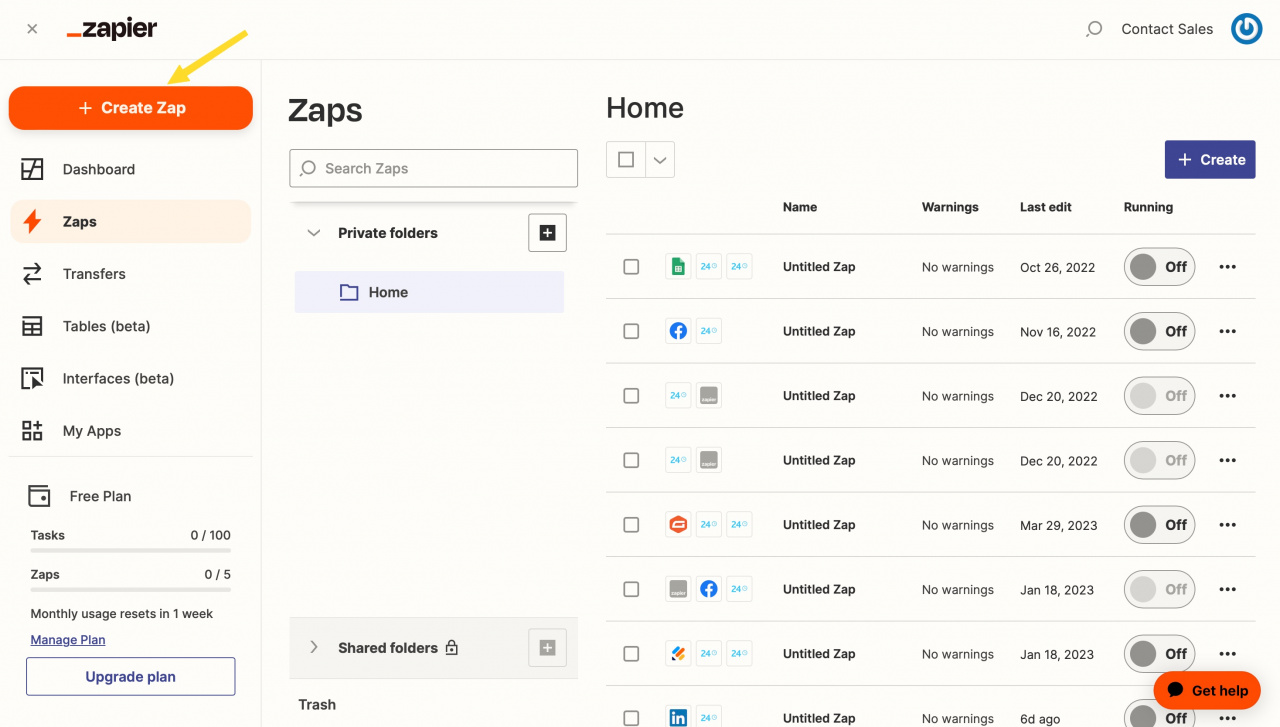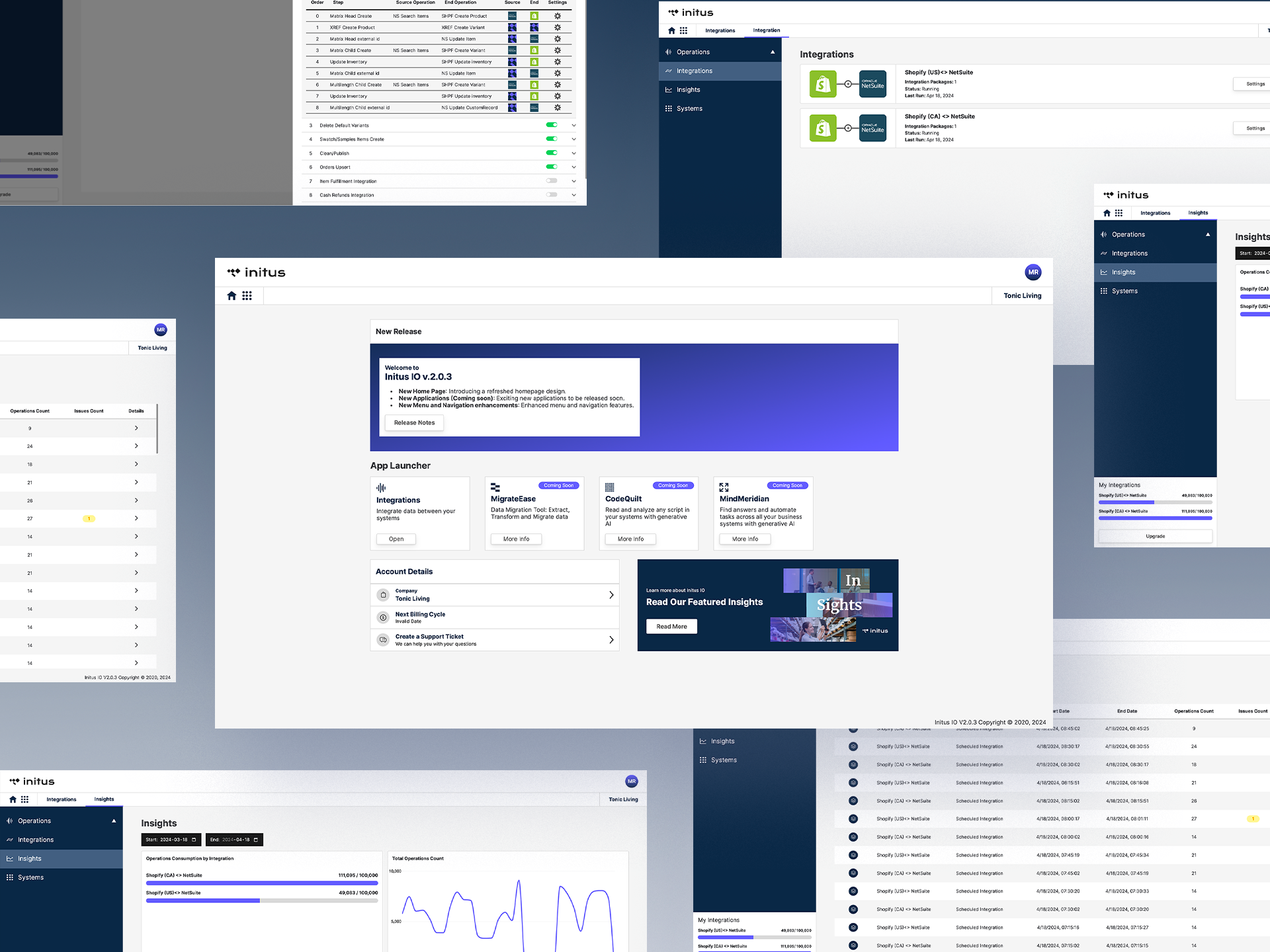Integration tools are revolutionizing the workplace by automating workflows, synchronizing data, and connecting disparate applications. The future of work will be defined by how well organizations leverage these tools to foster collaboration and remain competitive in the digital age.
In today’s rapidly evolving digital landscape, the future of work is continuously being shaped by technological advancements. One of the most transformative trends is the rise of cutting-edge integration tools that are redefining how businesses operate and collaborate. These tools, designed to seamlessly integrate various applications, automate workflows, and synchronize data, are revolutionizing business processes, making organizations more efficient, agile, and competitive.
In this blog post, we will explore how software integration solutions, including platforms like Zapier, Initus and automation technologies, are reshaping the workplace. We’ll delve into the importance of enterprise integration, business process automation, and the powerful role that data synchronization and exchange play in ensuring that companies remain on the cutting edge of innovation.
The Rise of Automation and Integration Tools in the Modern Workplace
As businesses scale and grow, they typically rely on a diverse suite of software applications. These tools often operate in silos, leading to inefficiencies in communication and collaboration across departments. Historically, this created barriers to data exchange, limited the automation of workflows, and added unnecessary complexities to operations. However, the advent of software integration tools has begun to address these challenges by allowing companies to link disparate systems, automate processes, and streamline data flow across platforms.
The workplace of the future will be defined by how well organizations leverage integration solutions to foster cross-functional collaboration, reduce manual tasks, and ensure that critical data flows freely between applications. Automation will play an integral role in this transformation, and businesses that embrace these tools will be better positioned to thrive in the digital era.

The Role of Zapier in the Automation Revolution
A popular tool in this space is Zapier, a platform designed to facilitate automated workflows between applications. With Zapier, users can create custom automations, known as Zaps, that link different apps together. These Zaps enable the automated transfer of data between applications, eliminating the need for manual intervention. For example, a business could use Zapier to automatically generate a Slack notification every time a new lead is captured in Salesforce or update a Google Sheet when a customer submits a form on their website. This level of automation allows organizations to streamline their operations, saving time and reducing the likelihood of human error. Zapier’s ability to integrate over 3,000 apps makes it a powerful tool for business process integration. It empowers companies to build automated workflows that can scale as they grow, ensuring that their operations remain efficient even as they adopt new technologies.
Advanced Integration and Automation Tools
Enterprise-level organizations often require more robust integration and automation capabilities. This is where enterprise integration platforms, such as Initus come into play. These platforms offer more advanced tools for application integration and provide support for complex workflows and data flows across large systems.
Enterprise integration tools allow companies to connect critical systems like e-Commerce platforms, ERPs, CRMs, and other enterprise software, enabling the seamless flow of data across departments. By automating complex business processes, such tools not only improve operational efficiency but also enhance data visibility across the organization.
Additionally, the need for data synchronization between different applications becomes increasingly important as businesses scale. Synchronizing data between applications ensures that employees are always working with the most up-to-date information, allowing for better decision-making and reducing redundancies. Data exchange between various platforms helps avoid the risk of data silos, making information readily accessible across the organization.

The Impact of Software Integration on Business Processes
The future of work will be increasingly shaped by business process automation. Automation frees employees from repetitive and mundane tasks, allowing them to focus on more strategic and creative aspects of their work. This shift has far-reaching implications for productivity, innovation, and employee satisfaction.
At its core, business process integration involves connecting different software applications to create seamless workflows. Enterprise-grade integration platforms enable businesses to automate key processes such as lead generation, customer support, inventory management, financial reporting and more.
Consider the example of an e-Commerce solution being integrated with an enterprise resource management (ERP) system. Click below to see a video of how InitusIO can be used to integrate these systems. As demonstrated, the integration of Shopify and NetSuite ensures that online sales are translated to sales orders seamlessly and that inventory levels are automatically updated in real time, which saves time and maximizes operational efficiency.
Automating Workflows: From Simple Tasks to Complex Processes
While simple automations, such as sending an email alert or creating a task when a new file is uploaded, are incredibly useful, the real power of automation lies in handling complex processes. With advanced integration tools, organizations can automate multi-step workflows that involve several applications and processes.
For instance, consider a marketing campaign workflow that spans multiple teams and tools. A campaign manager might use Zapier or a similar tool like Salesforce to automate the flow from lead capture to lead nurturing. When a user fills out a form on a landing page, Zapier can automatically update the CRM with the new lead’s information, send the lead a personalized welcome email, and assign the lead to the appropriate sales representative for follow-up. This level of automation ensures that no lead slips through the cracks and significantly reduces the time spent on manual data entry and communication tasks.
Advanced enterprise integration tools can take this a step further by integrating the entire marketing tech stack, including tools for content management, social media, analytics, and advertising. Automating these processes allows marketing teams to execute campaigns more efficiently, optimize their strategies in real-time, and achieve better results with fewer resources.
The Importance of Data Synchronization and Exchange
One of the key benefits of using integration tools is their ability to synchronize data across platforms. Data synchronization ensures that every system in the organization is using the most current and accurate data, which is critical for maintaining consistency and reliability in business processes.
For example, in the healthcare industry, data synchronization between patient records, billing systems, and insurance providers is essential for ensuring accurate medical billing and improving patient care. Similarly, in the financial services sector, integrating accounting software with transaction data from banks ensures that financial reports are accurate and up-to-date.
Data exchange is another critical feature of integration platforms. In many industries, businesses rely on the exchange of data between multiple partners, vendors, and third-party systems. Integration tools facilitate seamless data exchange, allowing businesses to connect with external systems while maintaining data security and compliance with regulations.
In the future, as more organizations adopt cloud-based services and move towards a digital-first approach, the ability to synchronize and exchange data across multiple platforms will become increasingly important. Integration solutions that support secure and efficient data exchange, will enable businesses to collaborate more effectively, innovate faster, and respond more quickly to market changes.
The Future of Integration: AI-Powered Automation
Looking ahead, AI-powered automation is poised to take integration tools to the next level. Artificial intelligence and machine learning are already being integrated into many software applications, allowing for more intelligent automation that can predict trends, optimize workflows, and adapt to changing conditions.
For example, AI can be used to enhance data synchronization by identifying patterns in data usage and predicting when certain data will need to be updated or synchronized between systems. Machine learning algorithms can also be used to improve the accuracy of data exchanges by detecting anomalies or inconsistencies in the data and automatically correcting them. In addition, input data can be interpreted in different formats easily thanks to AI. i.e. Images. PDFs, and other data file types that can be interpreted and transformed into content of different formats via integrations. Image recognition AI-based functionality was implemented as the foundation of Initus’ inventory management solution designed for La Bota Roja as outlined in the video below.
The Challenges of Integration and How to Overcome Them
While the benefits of integration and automation are clear, there are also challenges that organizations must overcome to fully realize their potential. One of the most common challenges is the complexity of integrating multiple systems, especially in large enterprises where legacy systems may still be in use.
To overcome these challenges, businesses need to adopt a strategic approach to integration. This involves selecting the right tools for their specific needs, ensuring that they have the necessary technical expertise to implement and manage integrations, and regularly reviewing their workflows to identify areas where further automation can be applied.
Additionally, security and data privacy are critical considerations when integrating multiple applications. Organizations must ensure that their integration solutions comply with data protection regulations and that they have strong security measures in place to protect sensitive information during data exchanges.
Conclusion: Embracing the Future of Work
As we look to the future, it’s clear that integration tools and automation will play a pivotal role in shaping the workplace. By embracing cutting-edge integration solutions, businesses can streamline their operations, improve efficiency, and drive innovation. Whether it’s through tools like Zapier for simple automations or enterprise-level tools such as Initus for complex integrations, organizations that invest in automation technologies will be better positioned to succeed in the digital age. The ability to synchronize data, exchange information seamlessly, and automate business processes will be key to maintaining a competitive edge and adapting to the ever-changing demands of the modern business landscape.
The future of work is here, and it’s being powered by the integration of applications, data, and workflows. Businesses that seize this opportunity to integrate and automate will not only improve their operations but will also unlock new possibilities for growth, innovation and success.
We know that every organization faces unique challenges and opportunities. At Initus, we understand that a one-size-fits-all approach to integrations doesn’t work. That’s why our team creates software integrations that can support AI-based solutions to address the specific needs of any sector.
Adaptability + Experience + Strategic Methodology. If you have an operational improvement challenge you want to overcome, contact us today.




